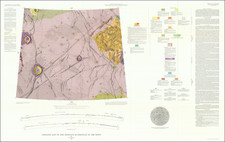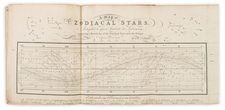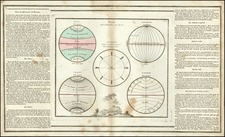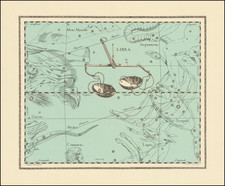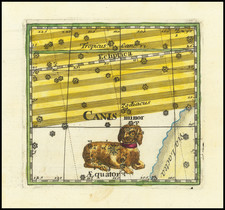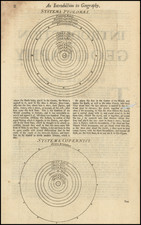This is a fabulous chart of various faint objects visible in the night sky, showing both binary star systems and deep-space clusters. The images in this work are well designed, showing the objects in question as well as surrounding stars. For many of the clusters, Burritt portrays individual stars rather than a blend of light, which is how some globular clusters appear using modern imaging techniques.
The portrayal of double-star systems is particularly interesting. Gamma Arietis, Figure 2 in the image, was the earliest double star system to be discovered, having been observed by Robert Hooke in 1664. It is unclear any of these double-stars are optical doubles, which only appear to be related to the observer due to proximity, rather than true binaries, in which the gravity of one star affects the other star. Particularly fascinating is the depiction of orbiting stars in Figures 9 and 19.
This work was published as Map VIII in Atlas Designed to Illustrate Burritt's Geography of the Heavens, an accompaniment to another of Burritt's works as the title would suggest. The author, Burritt, grew up poor in Massachusetts and had to abandon his education at Williams College due to a lack of funds. He moved to Georgia, where he worked as an editor and started a family, but had to flee after he was accused of being anti-slavery. Upon his return to the north, Burritt would build himself an observatory. This would lead to his Geography of the Heavens, a very influential early 19th-century astronomical text. The atlas was well-illustrated and received. Burritt would die at forty-four while sailing to the newly independent Republic of Texas.









